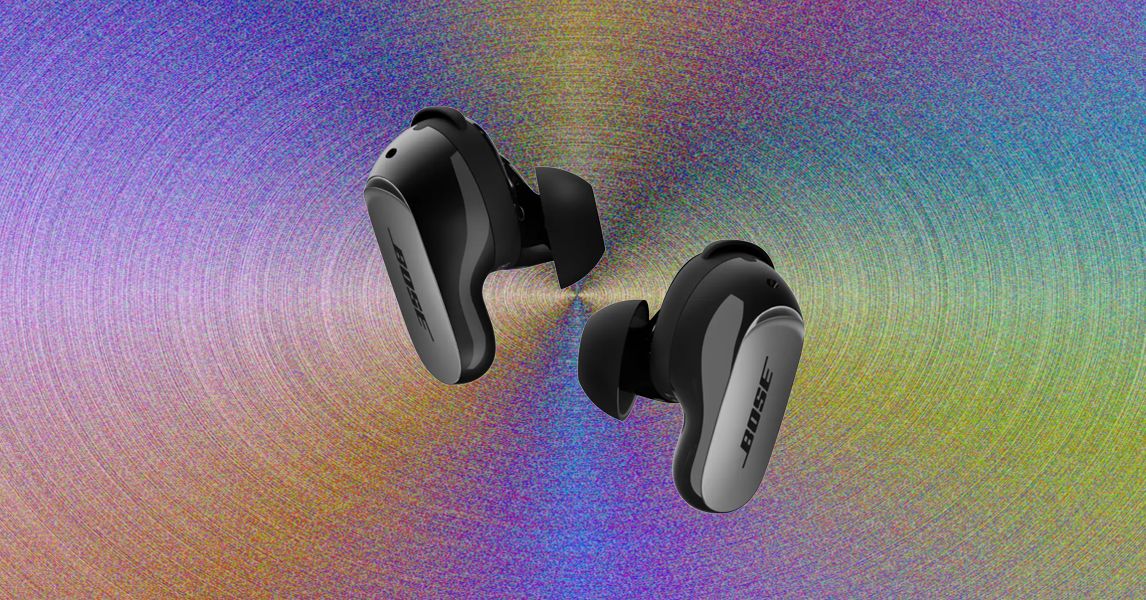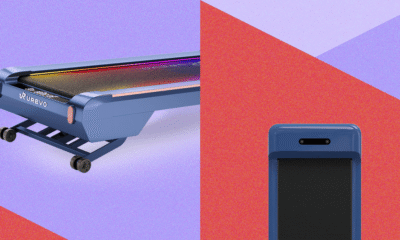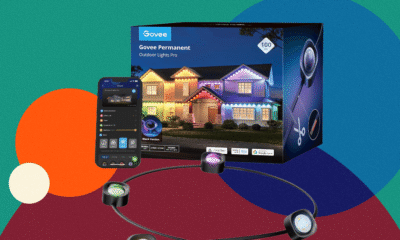Tech
The New Bose QC Ultra 2 Are the Best Noise-Canceling Headphones Right Now

When it comes to cutting out annoying outside noise, there is no brand in history that has denatured more decibels than Bose. The pioneers of noise-canceling haven’t been without challengers in recent years, including Sony, Apple, and others, but Bose has maintained the crown for generation after generation. Perhaps no product showcases this iterative talent more than its latest earbuds, the QuietComfort Ultra 2.
There wasn’t anything wrong with the first pair. I liked their ergonomic fit, excellent noise reduction, and bold low end, not to mention their excellent microphones, angled toward your mouth in an homage to Apple’s popular AirPods Pro.
With the new QC Ultra 2, we get wireless charging, more customizable sound, better immersive audio, and improved noise reduction. As far as I’m concerned, if you’re a business traveler or someone who wants a compact pair of headphones that truly removes the sound of the world around you, these are—once again—the best you can buy.
Generation 2
Photograph: Parker Hall
I find it very hard to fault Bose for its rubber-stamped design approach; the previous pair were very comfortable and functioned extremely well. The slight changes that appear on the new model are welcome, and I’m not mad at the lack of physical changes.
You now get wireless charging in the clamshell case and a guard to prevent earwax buildup, and you can toggle the included touch controls in the app, which is very helpful when doing activities where you might brush your ear.
Places I don’t find improvements include the weight (the new buds are about a gram heavier but still perfectly fine in your ears) and battery life (the new buds have the same six hours with ANC on, 24 hours in the case as the old model). Bose has even opted for the same drivers in this new generation of buds, with slight tuning adjustments that I’ll get into in a bit.
Features Galore
Courtesy of Bose
If you’re new to the world of wireless earbuds or are coming from a more basic pair, the amount of customization that you can do with Bose’s latest buds can feel daunting. You can choose various “modern traditional” adjustments like EQ and noise canceling/transparency modes, but the buds also allow you to dial in two kinds of immersive 3D upscaling (one for staying in place, one for while you move around), among other wild and fantastical new settings that take advantage of modern processors and machine learning tech.
Tech
OpenAI’s Chief Communications Officer Is Leaving the Company

OpenAI’s chief communications officer, Hannah Wong, announced internally on Monday that she is leaving the company in January, WIRED has learned. In a statement to WIRED, OpenAI spokesperson Kayla Wood confirmed the departure.
“Hannah has played a defining role in shaping how people understand OpenAI and the work we do,” said CEO Sam Altman and CEO of applications Fidji Simo in a joint statement. “She has an extraordinary ability to bring clarity to complex ideas, and to do it with care and grace. We’re deeply grateful for her leadership and partnership these last five years, and we wish her the very best.”
Wong joined OpenAI in 2021 when it was a relatively small research lab, and has led the company’s communications team as ChatGPT has grown into one of the world’s largest consumer products. She was considered instrumental in leading the company through the PR crisis that was Altman’s brief ouster and re-hiring in 2023—a period the company internally calls “the blip.” Wong assumed the chief communications officer role in August 2024, and has expanded the company’s communications team since then.
In a drafted LinkedIn post shared with WIRED, Wong said that OpenAI’s VP of communications, Lindsey Held, will lead the company’s communications team until a new chief communications officer is hired. OpenAI’s VP of marketing, Kate Rouch, is leading the search for Wong’s replacement.
“These years have been intense and deeply formative,” said Wong in the LinkedIn post. “I’m grateful I got to help tell OpenAI’s story, introduce ChatGPT and other incredible products to the world, and share more about the people forging the path to AGI during an extraordinary moment of growth and momentum.”
Wong says she looks forward to spending more time with her husband and kids as she figures out the next chapter in her career.
Tech
The Best Cozy Earth Pajamas Deal We’ve Seen All Year

I love having a whimsical, comfortable wardrobe, and that doesn’t apply just to daytime clothes. My pajama collection is quite extensive, with the added requirement that each pair be both cooling and extra soft. I’m someone who overheats easily in her sleep, and with sensitive skin, it’s not a winning combination.
I’ve been growing my Cozy Earth pajama collection for years, usually getting a new set during Black Friday. Obviously, that shopping event has come and gone, but this sale gives you one more chance. And, believe it or not, it’s even better than what Cozy Earth ran sale-wise for its pajamas during Cyber Week.
Tech
We Just Found Out Taylor Swift Sleeps on a Coop Pillow—They’re Having a Flash Sale to Celebrate

While I’m a mattress and sleep product expert, thanks to years of hands-on experience, I’m also aware that my opinion is not the end-all, be-all for everyone. However, when a megastar is also a fan of a product you’ve reviewed, it’s a good confirmation that you’re on the right track.
Taylor Swift, as it would turn out, is also a fan of Coop Sleep Goods—which we can confirm based on this December 10 Late Show With Stephen Colbert appearance.
Coop’s got some of our favorite pillows, particularly the Original Adjustable pillow. It comes in three shapes: the Crescent, the Cut Out, and the Classic, which is a traditional rectangular shape. I love (and regularly sleep on) the Crescent, which has a gentle curve on the bottom to allow for movement while maintaining head and neck support.
-

 Politics1 week ago
Politics1 week agoThailand launches air strikes against Cambodian military: army
-

 Fashion1 week ago
Fashion1 week agoGermany’s LuxExperience appoints Francis Belin as new CEO of Mytheresa
-

 Politics1 week ago
Politics1 week agoZelenskiy says Ukraine’s peace talks with US constructive but not easy
-

 Politics5 days ago
Politics5 days agoTrump launches gold card programme for expedited visas with a $1m price tag
-

 Tech6 days ago
Tech6 days agoJennifer Lewis ScD ’91: “Can we make tissues that are made from you, for you?”
-

 Business5 days ago
Business5 days agoRivian turns to AI, autonomy to woo investors as EV sales stall
-

 Entertainment1 week ago
Entertainment1 week agoToo big to fail? IndiGo crisis exposes risks in Indian aviation
-

 Sports5 days ago
Sports5 days agoU.S. House passes bill to combat stadium drones



















